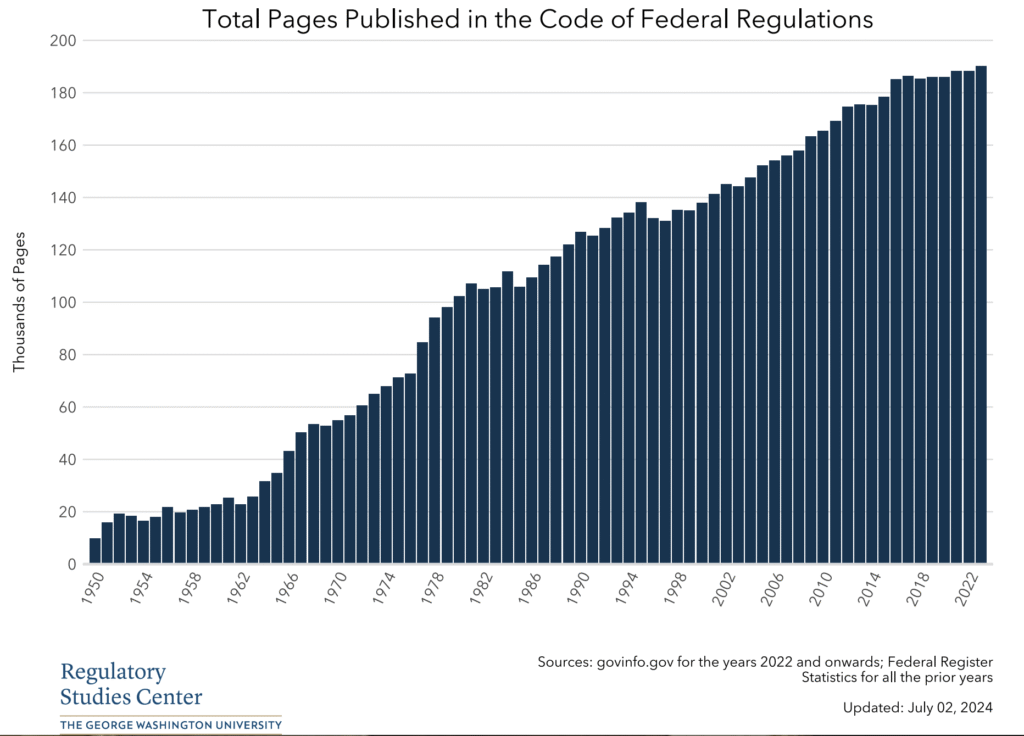
DOGE is using AI to remove half of federal regulations because they are illegal.
They’re targeting 100,000 regulations that collectively cost Americans $3.3 trillion per year.
That’s more than the income tax.
In fact, it’s nearly the GDP of Japan. pic.twitter.com/VT5YiuzBqS— Peter St Onge, Ph.D. (@profstonge) August 1, 2025
The ironic part of the DOGE using AI to cut regulations and save trillions of dollars every year is that we will not win the AI race without nuclear energy. We will not advance nuclear energy without overhauling the cripling regulatry chokehold on the industry. You will want to check out this interview with Jon Brewton, CEO of Data Squared and their new patents on trust and verification of AI. Building Trust in AI: Data Squared’s Breakthrough for Energy & Defense
Are you from California or New York and need a tax break?
The Birth of DOGE and Its Mission
Established under President Trump’s administration in late 2024, DOGE was tasked with slashing government waste, reducing spending, and eliminating unnecessary regulations. Led by tech visionary Elon Musk and entrepreneur Vivek Ramaswamy, the initiative operates outside traditional federal bureaucracy, drawing on private-sector expertise to identify inefficiencies. While Congress has passed some regulatory cuts through bills like the REINS Act and targeted reforms, these legislative efforts often scratch the surface, bogged down by partisan gridlock and lobbyist influence. DOGE, however, dives deeper, using cutting-edge AI to systematically review and repeal rules that were never authorized by law. The centerpiece of this effort is the “DOGE AI Deregulation Decision Tool,” an AI system developed by Musk’s engineers. According to internal documents, the tool analyzes approximately 200,000 federal regulations, recommending the elimination of up to 100,000 deemed unlawful or obsolete. This automation has already proven its mettle: at the Department of Housing and Urban Development (HUD), it processed 1,083 regulatory sections in under two weeks, and at the Consumer Financial Protection Bureau (CFPB), it drafted 100% of proposed deregulations.
AI: The Superbot Revolutionizing Deregulation
What sets DOGE apart is its embrace of AI to tackle the “deep state” regulations—those entrenched rules enforced by unelected agencies that critics argue exceed congressional intent and stifle economic freedom. Traditional deregulation relies on human reviewers sifting through mountains of legalese, a process that could take 3.6 million man-hours for 100,000 rules. DOGE’s AI slashes this by 93%, requiring just hours of human oversight per repeal.
|
Key Figures on Regulatory Costs
|
Amount
|
Comparison
|
|---|---|---|
|
Total Federal Regulatory Cost (NAM Estimate)
|
$3.079 Trillion
|
12% of U.S. GDP
|
|
DOGE’s Targeted Savings
|
$3.3 Trillion Annually
|
More than Federal Income Tax ($2.3T)
|
|
Man-Hours Saved by AI
|
3.36 Million (93% Reduction)
|
Equivalent to 1,680 Full-Time Workers per Year
|
|
Regulations Targeted for Removal
|
100,000
|
Half of All Federal Rules
|
Breaking the Deep State’s Grip on the Economy
The “deep state”—a term for entrenched bureaucratic power—has long been accused of using regulations to expand control, often at the expense of economic vitality. These rules, layered over decades, create compliance nightmares that disproportionately hit small businesses and innovative sectors. Legislators have chipped away with bills like the Economic Growth, Regulatory Relief, and Consumer Protection Act, but these reforms are incremental and often diluted. DOGE’s AI approach circumvents this, enabling wholesale streamlining that could dismantle barriers erected by agencies like the EPA, SEC, and DOE. The economic ripple effects are profound. Regulations distort markets, inflate costs, and suppress growth. For instance, the Competitive Enterprise Institute estimates a $2.155 trillion annual drag, while Heritage Foundation analyses highlight how new rules under prior administrations added $18.8 billion in costs from just 188 major regulations.

A Game-Changer for the Energy Sector
For the energy sector and beyond, this is the deregulation revolution we’ve been waiting for.
Is Oil & Gas Right for Your Portfolio?
Crude Oil, LNG, Jet Fuel price quote
ENB Top News
ENB
Energy Dashboard
ENB Podcast
ENB Substack





